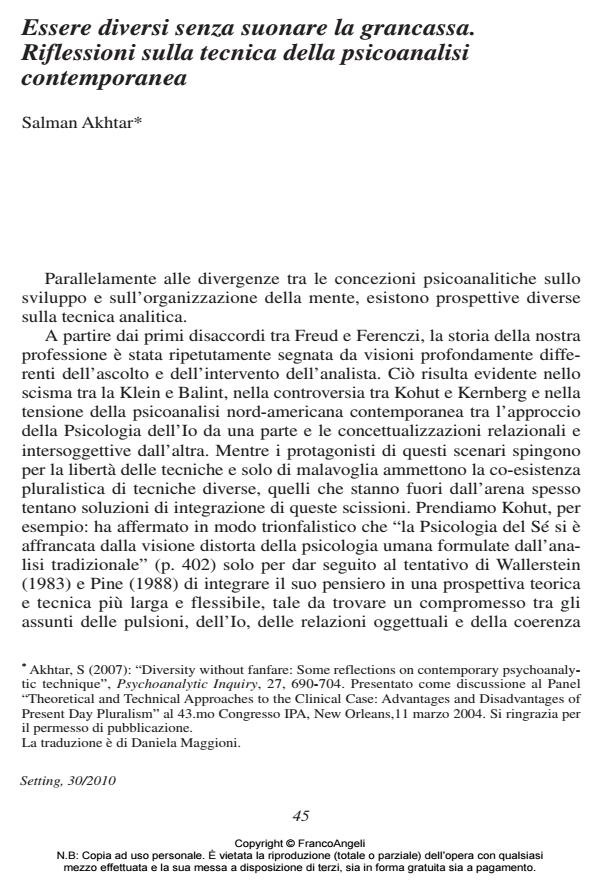Essere diversi senza suonare la grancassa. Riflessioni sulla tecnica della psicoanalisi contemporanea
Journal title SETTING
Author/s Salman Akthar
Publishing Year 2012 Issue 2010/30
Language Italian Pages 16 P. 45-60 File size 494 KB
DOI 10.3280/SET2010-030002
DOI is like a bar code for intellectual property: to have more infomation
click here
Below, you can see the article first page
If you want to buy this article in PDF format, you can do it, following the instructions to buy download credits

FrancoAngeli is member of Publishers International Linking Association, Inc (PILA), a not-for-profit association which run the CrossRef service enabling links to and from online scholarly content.
Varying perspectives on analytic technique, particularly on analytic listening and intervening, have repeatedly surfaced in the history of our profession, without sufficient attitude to integrate and compare themselves with the classic ones. Relational and intersubjective viewpoints, currently in vogue within the North American psychoanalysis, also seem to follow a similar trajectory.Their proponents (Mitchell, 1993; Ogden,1994) make it appear that such views are not only entirely novel but fundamentally irreconcilable with classical Ego Psychology’s perspectives,while others argue that they can co-exist. This raises an important question. Are multiple perspectives on technique actually incompatible or can they be synthesized into an unique gestalt? In this paper, I will attempt to address this question by way of commenting upon the clinical material on the case of Amalia X provided by Dr. Helmut Thoma and Dr. Horst Kachele. The first part will discuss Dr. Thoma's understanding of his patient’s symptomatology. The second part will focus upon the principles of Dr. Thoma's analytic technique.The third part will return to Amalia and attempt to discern the movements of attunement, intervention, and patient’s response through the process material provided. I will conclude with brief remarks that bring us back full circle to the question whether a plurality of technical approaches is essential or it is possible to have a unified technique of psychoanalysis.
Salman Akthar, Essere diversi senza suonare la grancassa. Riflessioni sulla tecnica della psicoanalisi contemporanea in "SETTING" 30/2010, pp 45-60, DOI: 10.3280/SET2010-030002